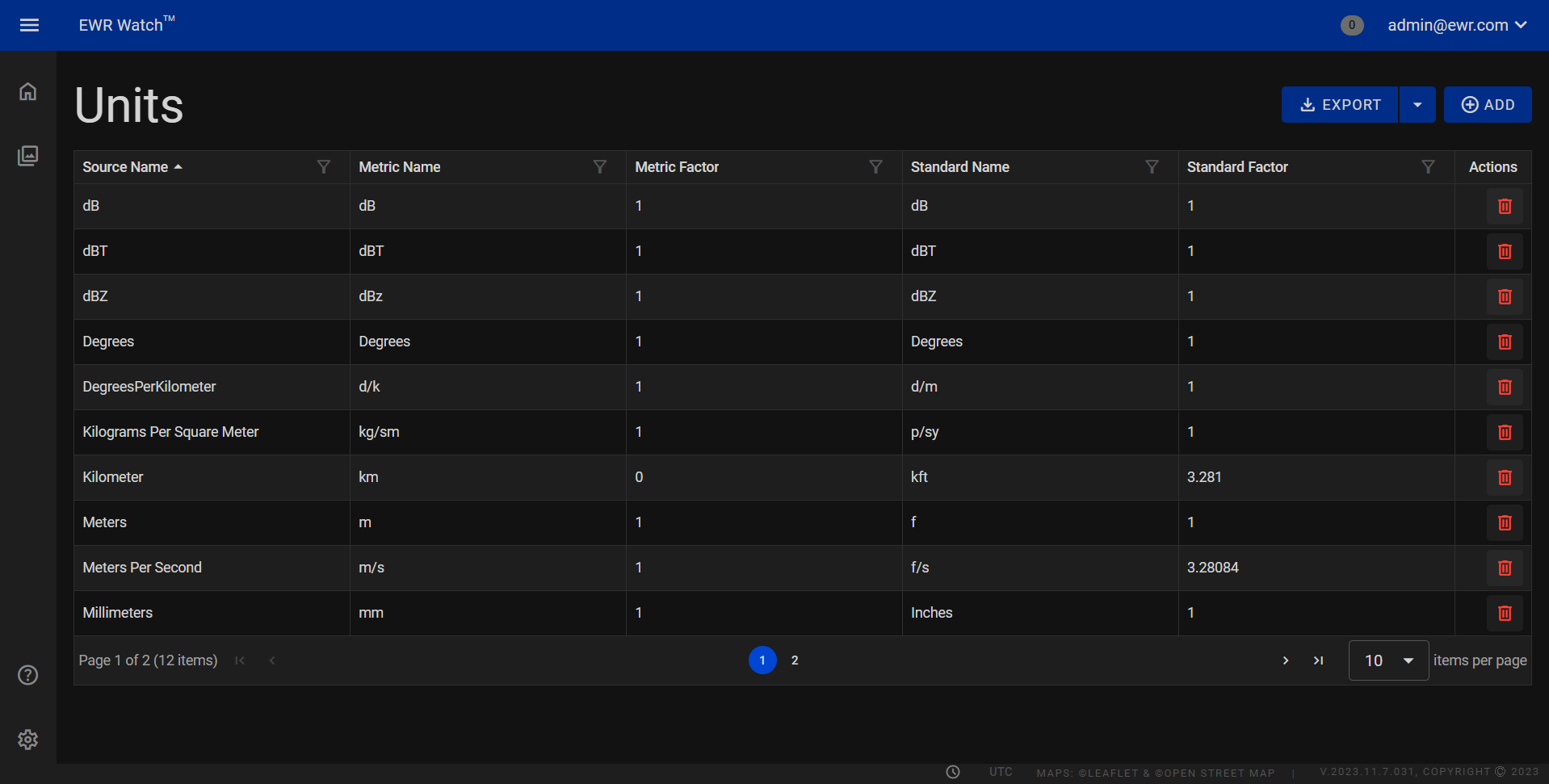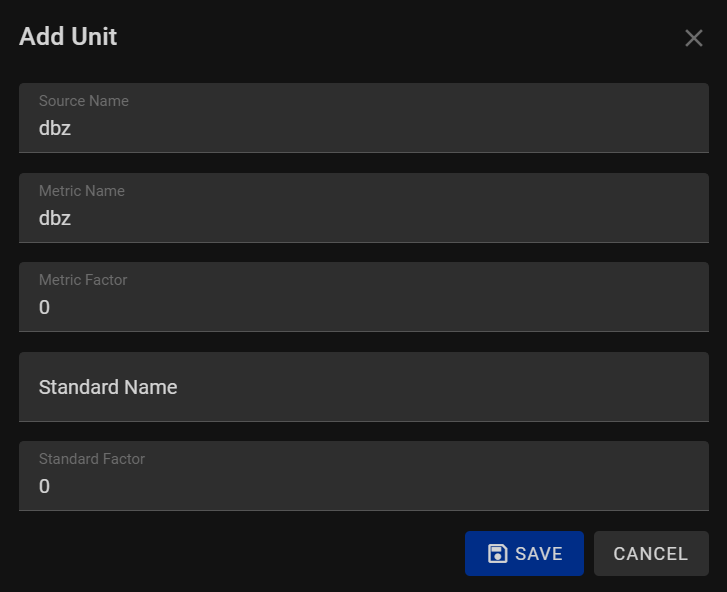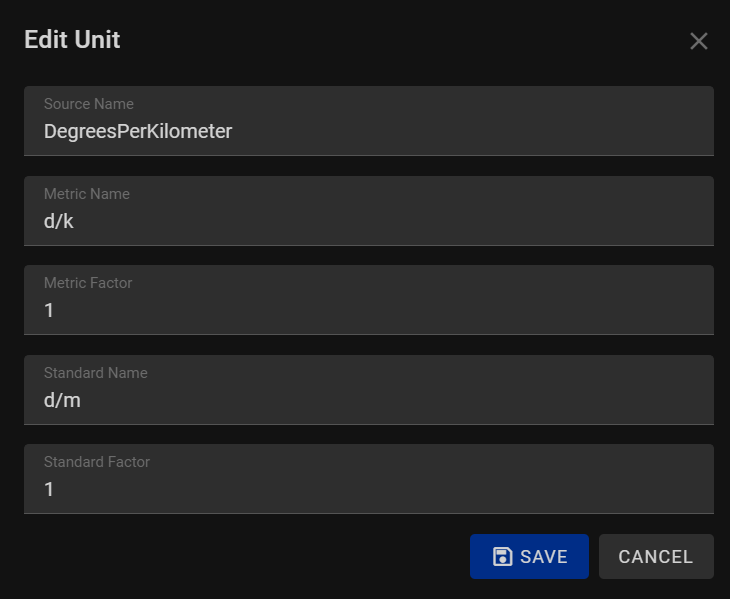Units
Welcome to our Units Page, your comprehensive resource for managing diverse metrics and standards within our program. Our intuitive Data Grid simplifies complex unit management, providing a seamless experience for users.
Data Grid¶

The units grid area consists of Five columns: Source Name, Metric Name, Metric Factor, Standard Name, Standard Factor, and an Actions Column . Below is a detailed description of each column.
Many data grids support advanced features such as resizing, multi-column sorting, filtering and more. See the Sorting and Filtering Grids in the manual for more information.
Columns¶
-
Source Name
Easily identify the source of each metric, ensuring clarity and transparency in your data. -
Metric Name
Quickly locate specific metrics, streamlining your search process and enhancing efficiency. -
Metric Factor
Understand the numerical relationship of the metric, aiding in precise calculations and analyses. -
Standard Name
Identify the standard associated with each metric, crucial for maintaining consistency and accuracy in your data. -
Standard Factor
Comprehend the standardized numerical value, allowing for seamless conversions and comparisons between different units. -
Actions Column
Empowering you with control, the actions column includes a convenient delete button. Effortlessly remove outdated or irrelevant data entries, ensuring your database remains up-to-date and reliable.
Actions¶
- Delete
Clicking "Delete" removes the respective radar device from the system. This action is useful when retiring old hardware and decluttering the interface. Users can confidently remove redundant or obsolete radar units, streamlining the application's radar management process.
Adding¶

-
Source Name
Enter the name of the source providing the metric data. This ensures clear identification of the data origin, maintaining transparency and accountability. -
Metric Name
Specify the name of the metric you are adding. This descriptive label helps in categorizing and organizing metrics effectively, enabling efficient data management. -
Metric Factor
Define the numerical factor associated with the metric. Understanding this factor is vital for accurate calculations and conversions within your program. -
Standard Name
Indicate the standard unit corresponding to the metric. This information is crucial for maintaining consistency and enabling seamless comparisons across different metrics. -
Standard Factor
Input the standardized numerical value corresponding to the metric. Having a standardized factor ensures uniformity, simplifying conversions and computations.
Once you have provided these details, our program will integrate the new unit seamlessly, enhancing the depth and versatility of your data pool. By adding units with precision and accuracy, you empower your program to deliver meaningful insights and analyses.
Editing¶

In the Units page, users can take advantage of a convenient double-click edit feature. By simply double-clicking on a specific row, they can swiftly modify both the properties associated with the unit.
-
Source Name
Modify the name of the data source associated with the unit. Editing this field allows you to update the source information, ensuring accuracy and relevance in your data records. -
Metric Name
Revise the name of the metric as needed. Editing the metric name enables you to align it with the latest terminology or specific categorization requirements within your program. -
Metric Factor
Adjust the numerical factor associated with the metric. Editing this factor allows you to refine the precision of your data, ensuring accurate calculations and conversions in your analyses. -
Standard Name
Update the standard unit corresponding to the metric. Editing this field enables you to adapt to changing industry standards or align with specific measurement conventions essential for your program. -
Standard Factor
Modify the standardized numerical value associated with the metric. Editing this factor ensures consistency and uniformity in your data, facilitating seamless comparisons and conversions across different units.
Exporting¶
Allows users to export the current Units list in two formats: CSV (Comma-Separated Values) and Excel. This feature facilitates easy data sharing and analysis by providing options suitable for various applications.